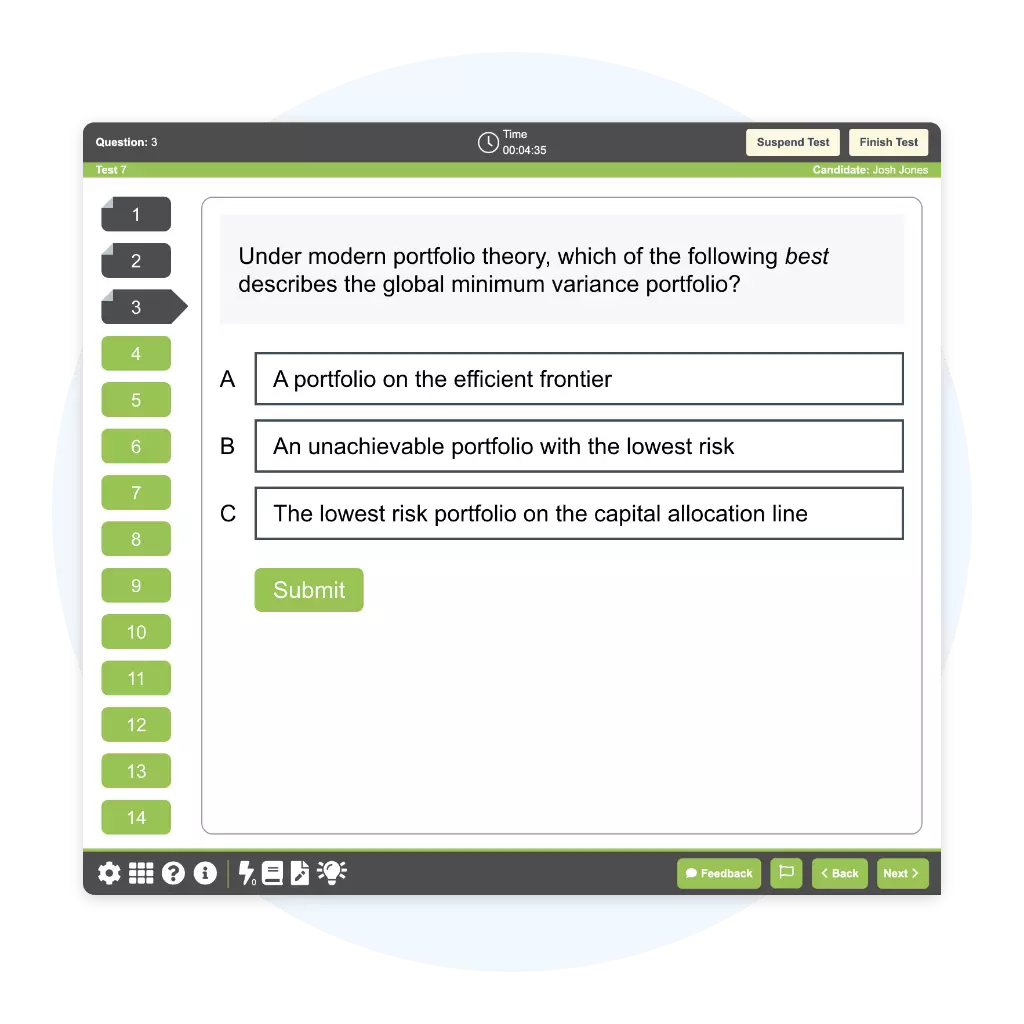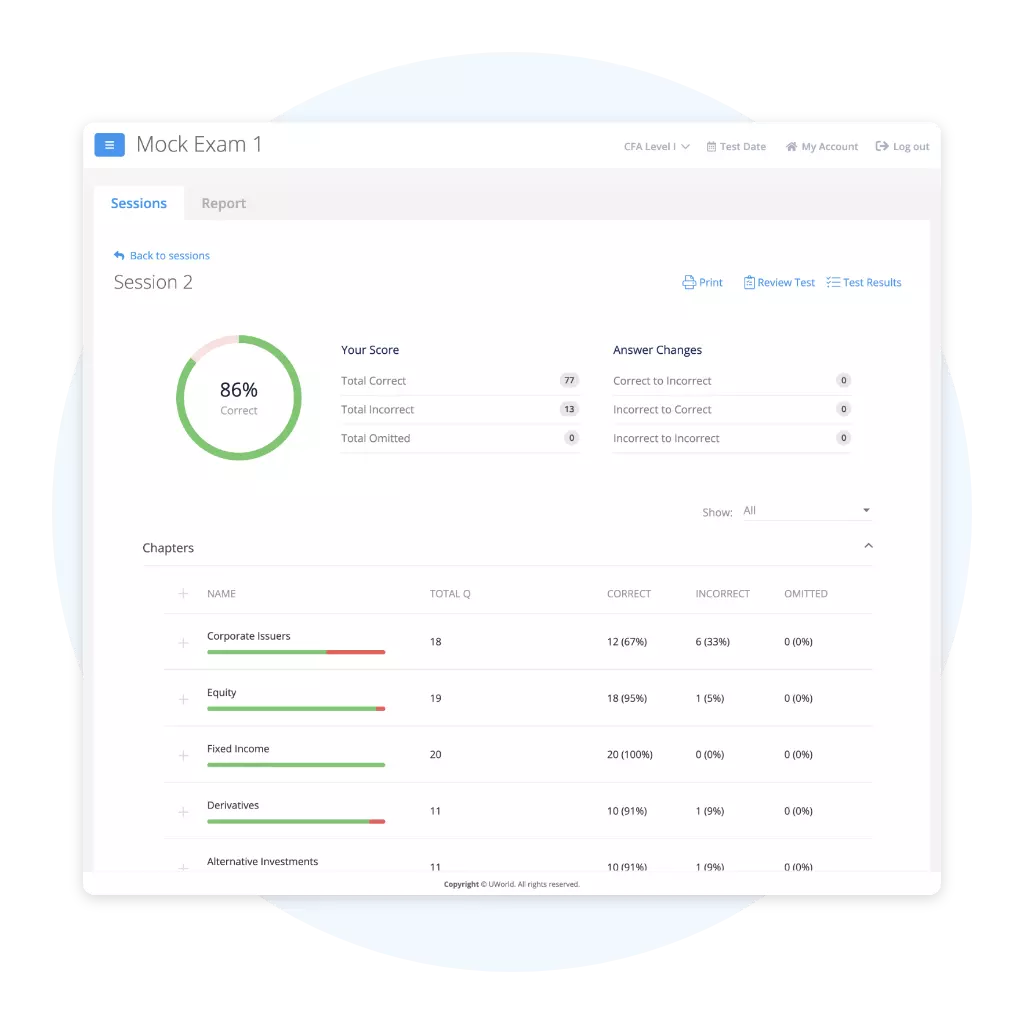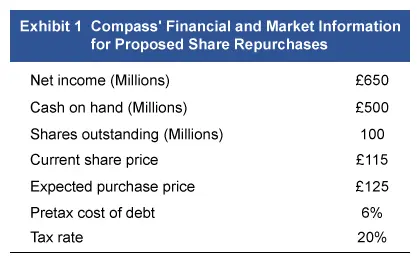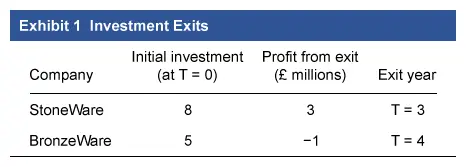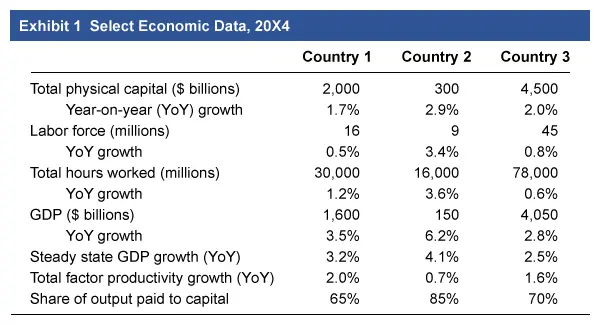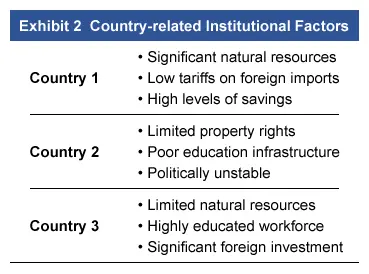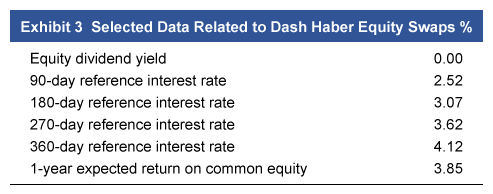UWorld CFA® Level 2 Mock Exams
Adapt to a Higher Level of Thinking
What if You Could Take the CFA Exam before You Take the CFA Exam?
Unique Questions
CFA Institute Aligned
Exam-Day Interface
Timed
Exam-Level
Tracked
Make the Actual CFA Exam Feel Like Practice
Familiarity breeds confidence. The more you simulate the actual exam environment, the more the actual CFA exam will feel like just another mock exam.
Vignettes require you to quickly scan for critical data.
Here’s What our Students are Saying…

After attempting the mocks on UWorld, which are very difficult, I gained confidence and worked through the loopholes in my knowledge. Great! The explanations are very friendly, and the tools available are useful and time-saving."

The explanations on answers are incredibly detailed, unlike the official curriculum. I am currently using two other providers besides this one. I can say the questions on the mock exam and practice questions have the highest quality. UWorld will be a central part of my study process in future."

The practice questions test your limit. The rigor and attention to detail are top-notch. The explanations are comprehensive, and I feel more confident with every question I tackle. Best practice mocks one could ask for that hit all parts of the exam yet have appropriate difficulty!"

Your Exclusive Destination for Comprehensive
CFA® Exam Preparation
Invest in yourself today. Profit tomorrow.
Study Guides
Best Value
Full Course


